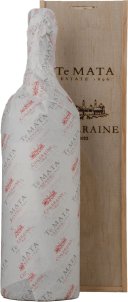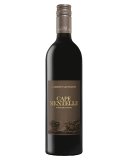Domaine de Chevalier Rouge Grand cru classe
Domaine A Cabernet Sauvignon, Coal River Valley Tasmania
Domaine A Cabernet Sauvignon, which also includes a small percentage of Merlot, Cabernet Franc and Petit Verdot is a foil to the more opulent mainland styles. Violets, roses and blackcurrants pervade through the wine like an English country garden. The tannins are especially fine grained and there is a beautiful freshness and mineral quality on the palate. The parcels of fruit are batch vinified in stainless steel tanks before maturation in 100% new oak for between two and three years.
Haut Bailly Ii Second wine of Chateau Haut-Bailly
HAUT BAILLY II Second wine of Chateau Haut-Bailly, Pessac-Leognan
Te Mata Estate Coleraine Cabernet Merlot
Te Matas Hawkes Bay estate is a prestigious winery with a rich history, producing some of New Zealands most celebrated wines. If the Langtons Classification crossed the Tasman, Te Mata Coleraine would sit alongside Grange at its very pinnacle. Established, esteemed, outstanding vintage after vintage, the glowing adjectives come thick and fast.
Cullen Wines Diana Madeline
Certified biodynamic and organic. Magnificent pitch black colour with a very deep bright dark red black hue. On the nose a lovely mix of red to black currant and mulberry scents morph into violet, vanillin cedar, dried herb, tobacco, black olive and spicy bay leaf notes. Medium bodied, elegant and superbly structured, the palate features a tightly knit matrix of red to black currant, mulberry and black olive flavours. Bright youthful acidity and an assertive grainy tannin structure provide an iron girder like core. Notions of tobacco, dried herbs, vanillin cedar and spicy bay leaf infusions also chime in. Restrained and understated in its power at present it concludes long and rich yet compact. Cellar 10-20 years. Alc. 13%
Stella Bella Wines Serie Luminosa Cabernet
Grosset Gaia Cabernet Blend
Grosset Gaia Cabernet is one distinguished CabernetBring it on! By Gaia standards, its plump and plush with sweet fruit, rich dark chocolate and tannin presence. Gaia is always a wonderful long-term cellaring option, as is the case with the '08, but this vintage the added bonus of up front fruit enables immediate enjoyment.
Cape Mentelle Cabernet Sauvignon
Cape Mentelle's Cabernet Sauvignon under the guidance of Rob Mann has become one of Australia's most prestigious Cabernet's. Sourced from what many believe to be the true home to Cabernet in Australia, the Margaret River, Cape Mentelle produce a wine that has a plush full-flavoured palate of concentrated blackcurrants and mulberries with a minerally spine. Richly textured and vibrant the palate finishes long with fine yet firm gravelly tannins. A superb candidate for some medium to long term cellaring.
Parker Coonawarra Estate First Growth Cabernet Sauvignon
Made from the most distinguished grapes on the Parker Estate. A beautiful blend of Cab Sauv, Cab Franc and Merlot.













